Culture means, “to cultivate.” It includes behaviors, habits, language, attitude towards food, etc. Culture includes practices, traditions that evolved over time. On the other hand, religion is a set of ethics that follows the message of God or a spiritual head. Culture is variable from age to age but religions are invariable. Culture is social and religion is personal. Religion is more of philosophy, and spiritual. A local culture is shaped by the predominant religion its people practice and the practice of a religion is often influenced by local culture too.
Shab-e-Barat also known as Laylatul Baraah or Laylatun Nisfe min Sha’ban, the night of deliverance or the night of salvation, is the 15th day of the eighth month (shaaban) of the Islamic Lunar calendar. It falls 15 days prior to Ramadan. There are scholarly differences in opinion about the night. However, all over South Asia including Bangladesh, India and Pakistan, and Central Asia including Uzbekistan, Tajikistan, and Kazakhstan this night is celebrated with great devotion and solemnity. It is a special night of seeking forgiveness and repenting to God (Allah), remembering our past sins and asking for forgiveness.
Traditionally in South Asia people invite others and feed the poor on this night, to remember God and to remember His Prophet. In Bangladesh, halva is the major food associated with this night. Different types of halvas are made and sent to neighbors as gift and distributed amongst the poor. However, religiously, the halva has no significance in Islam as part of Shab-e-barat.
My mom used to cook beef rezala and kichuri to distribute amongst the poor every year for shab-e-barat. All of the foods were distributed and we were not allowed to taste any. She would also make wonderful aromatic halvas to accompany the meal for the poor. Though I do not prepare any special meal these days for Shab-e-barat in the US, I have received several requests to share a special halva recipe. Hence, sharing a halva made of chal kumra(white gourd/ash gourd) that Ali and I both love.
Chal kumra halwa is slightly sweet, soft and smooth. Not crumbly at all. It does take a bit of time to dry up all the water from the melon, but the end result is incredibly tasty. I never use rosewater on chal kumara halva but some does. The aroma of ghee, color of saffron, crunch from the garnished pistachio make chal kumra halva irresistible.
- 1 medium size winter melon (2 cups puree)
- ½ cup sugar
- 3 tablespoon ghee
- 2-3 cinnamon, about 1” each
- Few strands of saffron
- Pistachio, for garnish
- Wash and peel winter melon. Discard the soft part with seeds.
- Cut the melon into cubes.
- Simmer the cubes until tender. Do not add any water, as winter melon will release liquid.
- When tender, drain all the liquid reserving about 2 tablespoon.
- Add saffron to the reserved liquid. Cover and let steep.
- Puree the tender melon and take 2 cups.
- Add ghee and cinnamon on a non-stick pan in medium heat.
- Add the puree, sugar, saffron water. Stir time to time until all liquid evaporates.
- Cook until the mixture is sticky and a mass pulls away from the bottom and sides of the pan.
- Remove from heat. Let cool.
- Garnish with pistachio and serve.
Adjust the sugar according to your taste.
Often, instead of throwing the liquid, I cook the winter melon until all the water has evaporated for higher nutrition. This method takes a long time.
As Winter melon starts to cook, taste the liquid a little. Sometimes, the liquid may be bitter which will ruin the halvah. Throw the bitter liquid away, wash the pieces again and cook by adding a little water if needed.
রেসিপি : চাল কুমড়ার হালুয়া
উপকরণ:
১টি মাঝারি আকারের ছাল কুমড়া (২ কাপ সিদ্ধ করে বাটা)
১/২ কাপ চিনি
৩ টেবিল চামচ ঘি
২-৩টি দারুচিনি, প্রাতিটি প্রায় ১”
এক চিমটি জাফরান
পেস্তা বাদাম, পরিবেশনের জন্য
প্রস্তত প্রনালী:
১. চাল কুমড়া ধুয়ে খোসা ছাড়িয়ে নিন। বীচিসহ নরম অংশ কেটে নিন।
২. চাল কুমড়া টুকরা টুকরা করে কেটে নিন।
৩. টুকরাগুলো অল্প আঁচে সিদ্ধ করুন। আলাদাভাবে পানি দেয়ার দরকার নাই কারন কুমড়া থেকে প্রচুর পানি বের হয়।
৪. চাল কুমড়া সিদ্ধ হয়ে নরম হলে ২ টেবিল চামচ পানি সরিয়ে রেখে বাকিটা ফেলে দিন।
৫. সংরক্ষিত পানিতে জাফরান ভিজিয়ে রাখুন।
৬. চাল কুমড়া বেটে ২ কাপ মেপে নিন।
৭. মাঝারি তাপে একটি ননস্টিক প্যানে ঘি এবং দারুচিনি নিন।
৮. বাটা কুমড়া, চিনি ও পানি সহ জাফরান দিন। পানি না শুকানো পর্যন্ত মাঝে মাঝে নেড়ে দিন।
৯. পানি শুকিয়ে গেলে নেড়ে নেড়ে কষাতে থাকুন যেন পুড়ে না যায়।
১০. ঘি বের হলে চুলা থেকে নামিয়ে নিন।
১১. ঠাণ্ডা হলে পেস্তা দিয়ে পরিবেশন করুন।
প্রয়োজনিও কিছু টিপস্ এর জন্যে দয়াকরে আটির্কেল অথবা ইংরেজি রেসিপির নোট সেকশনটা একটু দেখে নেবেন।
[/print_this]
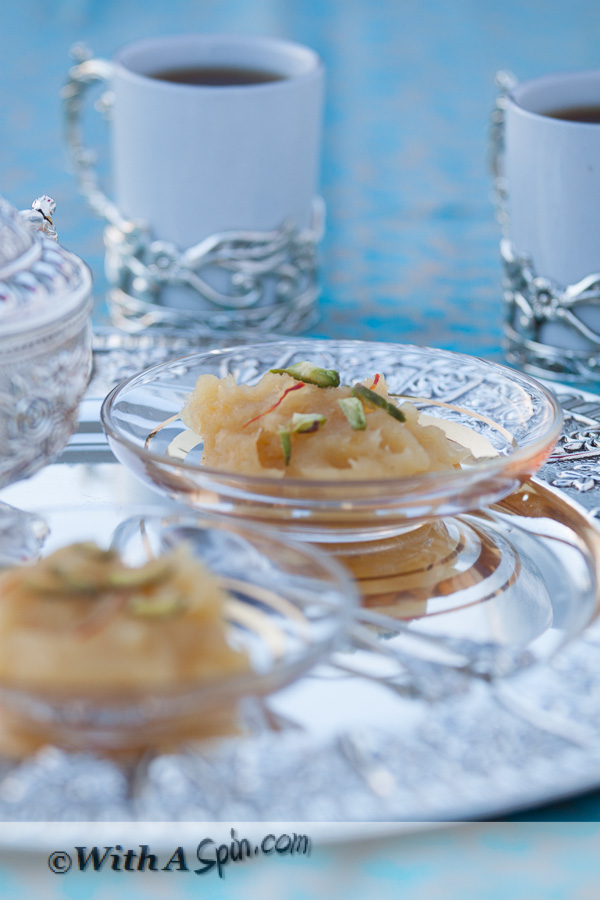
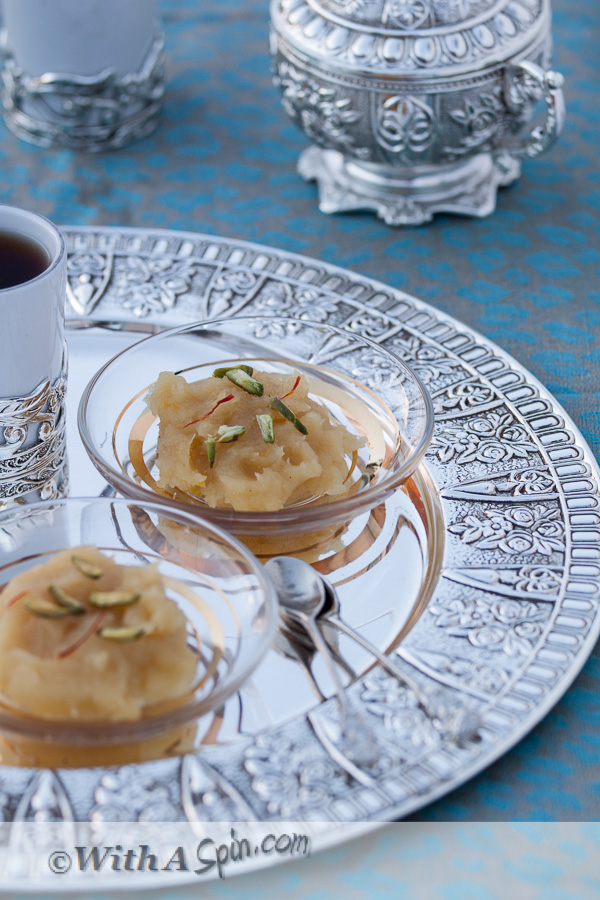
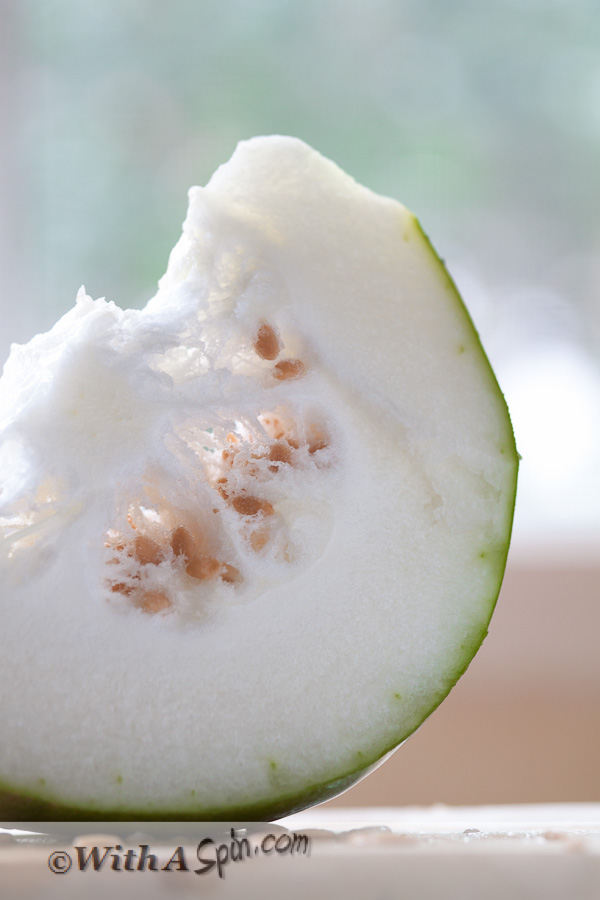
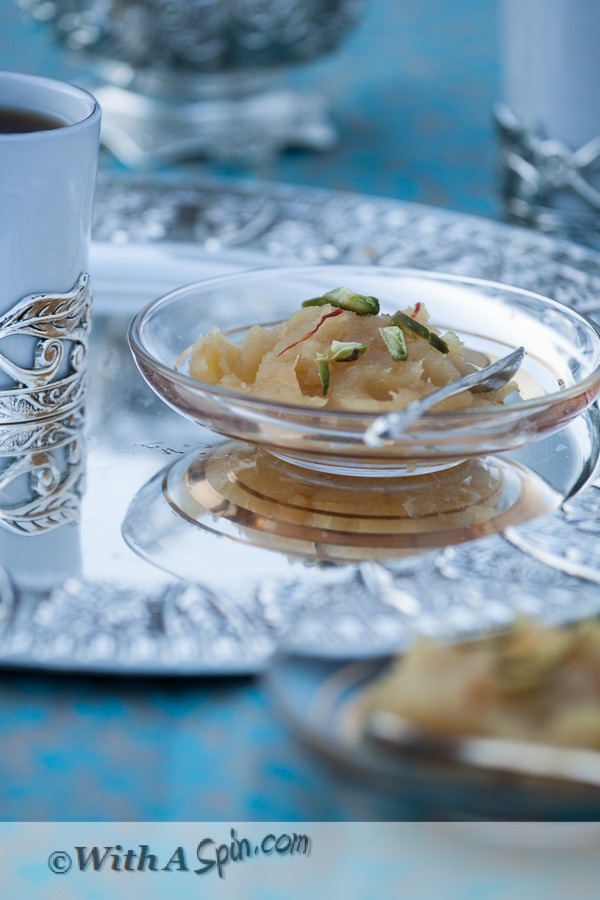
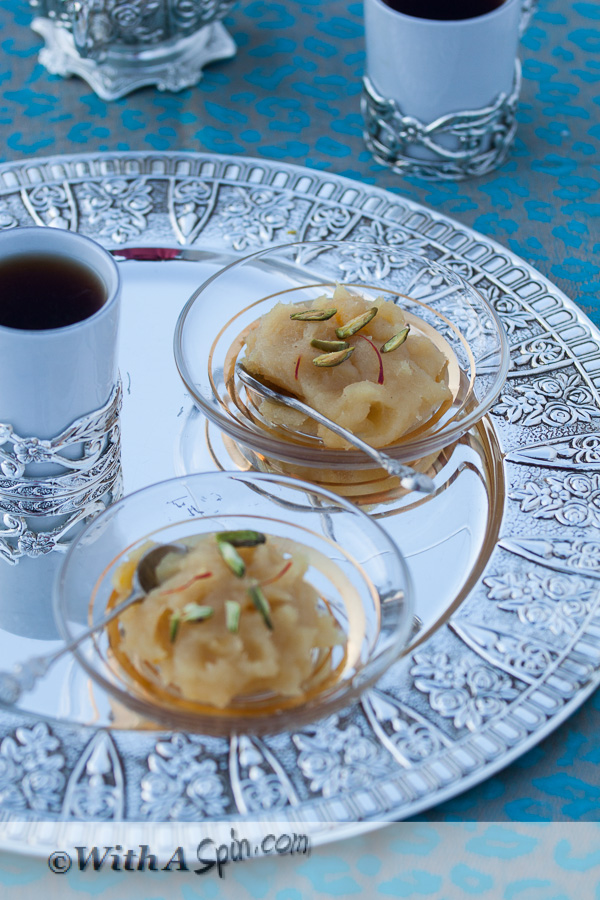

I love carrot halwa but I have never tried with melon. This one seems tasty and very summery!
interesting 🙂 I love how you grow my culinary world!
I
Halwa looks delicious
This is so new to me, would love to try this out.
Yum – I love halwa – though I haven’t tried winter melon halwa before – looks amazing!
This halwa looks incredible, the colour is stunning!
Im sorry I have not been keeping up but my subscriptions are not working for your blog unfortunately!
Cheers
Choc Chip Uru
Ok, Lail, not only is this sweet treat exquisite looking, but so are your dishes! Love anything with saffron – well done!